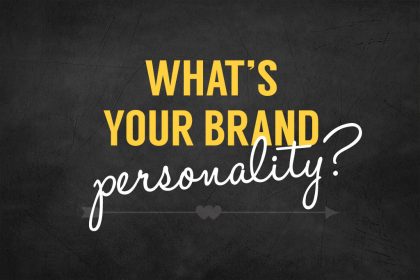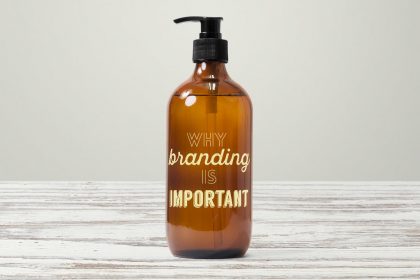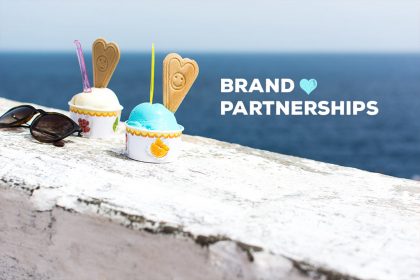What’s the difference between brand equity and brand value? And eight things you need to do to build yours
Do you know the difference between brand equity and brand value? Find out why brand equity in particular is so important, and how to build yours.
The easiest way to explain what brand equity is, is to use a real life example of how it works. Think of the last item or piece of clothing you purchased online. Where did you go and how did you make that decision? For me, the last item I bought was a pair of trainers.
Although I didn’t think twice about where I was going to buy these from, I considered the prices on other sites I was less familiar with. But in the end, the purchase was inevitably made from JD Sports.
This decision was simple and clear; my last pair of trainers were from this store and I knew I was guaranteed a great service and next day delivery.
JD Sports has excellent brand equity.
Brand equity is essentially the value of a brand and their products to their consumers. Global businesses such as Coca Cola and Nike have a tremendous amount of brand equity, which in turn allows them to be the leaders in their market and set premium prices that other smaller businesses could never get away with.
With brands like these, consumers aren’t just paying for a product, they are paying for the brand and the trusted superior quality. Did you know, for example, that Coca Cola’s red and white logo is recognised by 94% of the world’s population? Now that’s effective marketing.
Brand equity vs brand value – what’s the difference?
There is a common misconception that brand equity and brand value are the same thing. But they’re very different.
Brand value is the financial estimate of how much a brand is worth and can be calculated when taking into account the assets of the business on a balance sheet.
Brand equity, on the other hand, is the principally intangible value and importance of the brand to their customers. The better the brand equity, the more potential a business has of achieving a higher brand value.
Having a high brand equity translates into having an extremely loyal customer base. Brands can take advantage of this and set prices higher than competitors as consumers are far more likely to purchase their products.
For example, global tech leaders Apple, offer products with similar features to their competitors in the tech industry. However, due to their incredible customer loyalty, they have achieved high volumes of demand and have premium prices that can’t correspond to any other in their market.
Eight things you need to build your brand equity as a small business
So how do you start building the brand equity in your small business? Here are eight things you need to do.
1) Create an identity
If you want to improve the brand equity of your small business, you need to start at the very beginning, and ensure your business has a unique and solid brand identity.
To do this, you have to develop and complete your brand strategy. Brand strategy is a plan for your business that describes what you want to achieve and how you are going to achieve it.
When doing this, your business’s key core values and mission will be established. Brand strategy will help the development of your brand identity. You also need a distinct and professional-looking logo. (These don’t need to cost the earth – find out how you can design one yourself for free here.)
2) Use emotional marketing
The second thing you need to tackle is emotional marketing. Science has proven that people feel first and think second. This has been used in marketing to evoke emotional responses in consumers in order to increase sales and shares, likes, retweets etc.
As a business, you can manipulate assets of a marketing campaign such as colour, content and your behaviour as a business to evoke the feelings you want associated with your brand in your audience.
3) Think about colour
You’ve probably heard of the psychology of colour, which explains how colours are used and manipulated into creating certain emotional, behavioural and psychological responses in humans.
Feeding back into the example I gave earlier, Coca Cola’s red label portrays passion and excitement and Twitter’s pale blue suggests feelings of reliability and trust.
When it comes to marketing, take advantage of the knowledge you have of your target audience, and think carefully about the emotions and feelings they would want to feel. For example, a luxury brand with exclusive prices and offers will usually use black as their primary colour. This is because it represents feelings of luxury and prestige.
4) Content
As humans, when we listen to a story, several different of areas in our brain are activated. These areas are the same areas that are activated when something is happening in reality.
This increase in brain activity means we are seven times more likely to retain information. So it’s essential to create storytelling and narratives that invoke emotion in the consumer in your marketing.
For example, campaigns with the mission to encourage smokers to quit smoking tend to use shocking stories or images to provoke feelings of horror in the consumer.
5) Live up to your promises
As a business, your words and promises have to be reflected by your actions in order to gain the trust of consumers. For example, if you claim to be eco-friendly or environmentally conscious, then your business choices need to actively demonstrate this.
So, for example you would use only recyclable packaging, and if you deliver, use a green delivery fleet. Only using renewable electricity, or donating to sustainability projects are other good ways to live up to your green promises.
The more your actions and choices clearly reflect your words, the more trust you’ll build.
6) Develop loyal customer relationships
It’s just as important (if not more) to encourage existing customers to buy for you again than it is to find new ones. The secret to all successful businesses is that they all have a large, loyal customer base.
Customer retention starts at the moment they buy from you. Depending on the type of product or service your business offers, retaining customers will differ in importance.
For example, if you sell cheap consumables such as beauty products, you’ll need to actively maintain a loyal customer base who will buy their regular purchases from you every time. This means staying in contact (and therefore remain front of mind) with them continually.
However if you sell more expensive products, such as washing machines, you won’t need to actively maintain an ongoing relationship with your customers because the average customer won’t need to buy another washing machine for several years.
It’s still important to develop deeper customer relationships in businesses like these, because you need to build credibility for your products and services, and the great reviews and recommendations you’ll get as a result with will be highly valuable. But you don’t need to maintain such a consistent relationship.
Whether you’re emailing customers weekly, or sending out an annual newsletter, by developing deeper relationships with them they’ll feel a psychological connection to your brand, and will more more likely to make repeat purchases and become attached to your brand.
Ultimately, customers want to feel valued and part of a community with other consumers, and by facilitating this you can increase your brand equity considerably.
7) Maintain a high quality experience
A business that provides their customers with excellent experience – be it the products and services you sell, or your customer experience – will achieve greater brand equity.
So spend money and time on research and development to ensure that your products or services are as good as they can possibly be. And actively ask for, and act on, feedback from your customers.
Make sure your business’ ‘shop front’ sets out the right first experience of your brand too. For most businesses today, this is your website. So make sure it functions correctly, and accurately reflects your brand values. If you’re not happy with it, you may decide to work with a wordpress design agency or web developer to give it a makeover.
While this may require an initial outlay, the extra business and brand equity it will give you should make it a wise investment.
7) Listen to your customers
We’ve already touched on this, but it’s so vital that it’s worth elaborating on. Customer feedback is a free and simple way you can find out if your product or service needs improving.
It’s never easy reading or listening to criticism – even if it is constructive. But ignoring it is expensive. Because your customers will have opinions about your business whether you solicit or listen to them or not. Ad they’ll be basing their decision to buy from you or recommend you based on these opinions.
So it’s far better to know what they are and take any actions you need to improve your service to ensure that more of your customers are happy with what you offer. (You can read advice on handling customer complaints professionally here.)
A brand that cares enough about their own business and their customers to ask for opinions and respond to them also earns more trust. Customers look for authenticity, and are more likely to trust you with their money if they know you genuinely want to offer the best possible quality, and creative about their experience.
8) Be consistent
The final, and most important aspect of building brand equity is consistency. Your brand needs to look, sound, feel and act the same whenever your audience encounters it.
Over time, this builds trust and familiarity. And just like in the JD Sports example we started with, customers will be more likely to buy from you because they know what they can expect.
Need more help with your brand equity?
You can find more advice to help you build stronger brand equity in these articles:
- Five strategies that will help you grow your brand (with examples)
- How to use the DO-SAY-SEE © model to build your brand
- Six tips to help you build the right brand image for your business
- Three ways you can bring out your brand’s personality
Photo by Kristian Egelund










